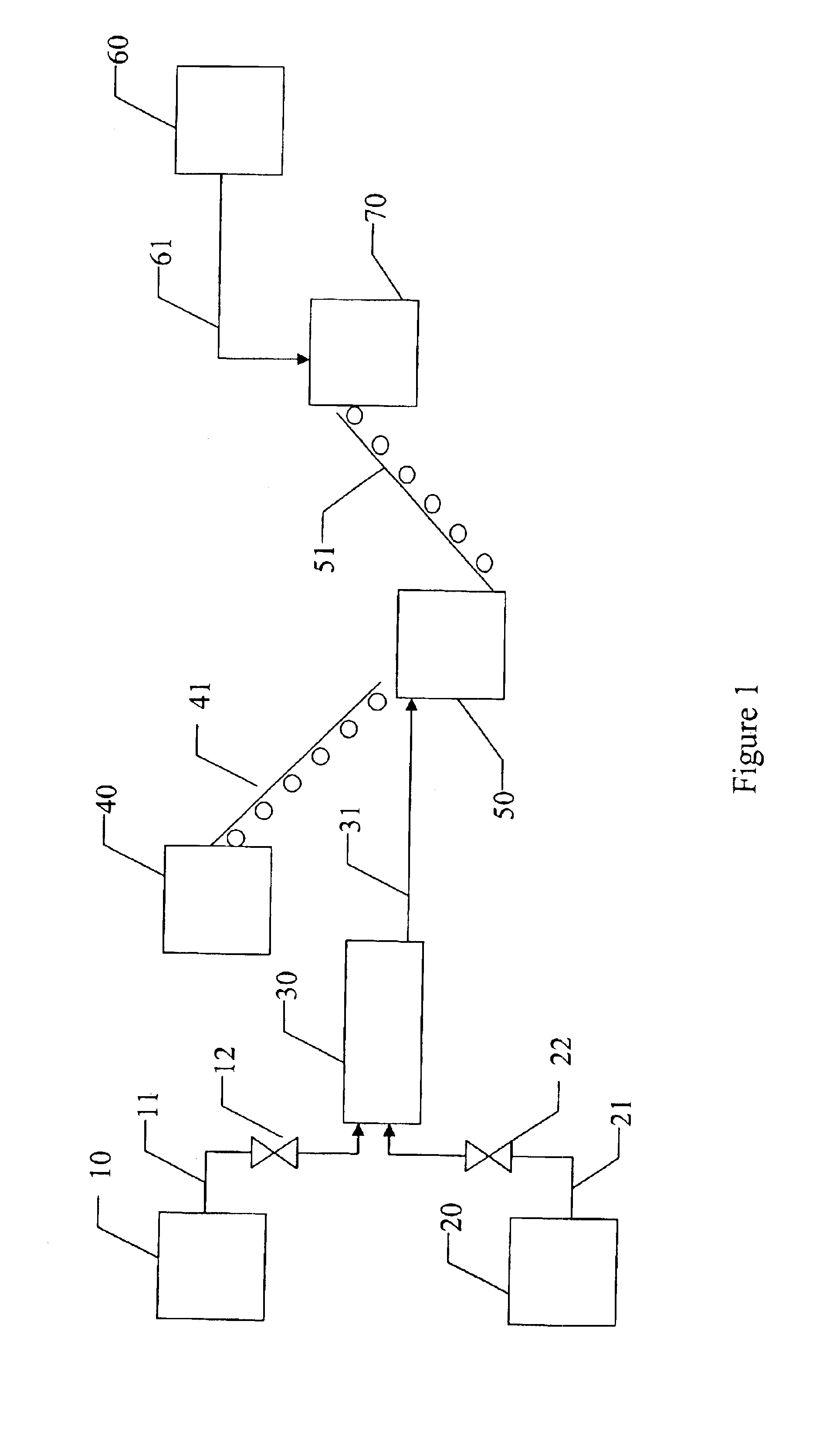Methods and compositions for consolidating proppant in subterranean fractures
a technology of proppant and subterranean fractures, which is applied in the direction of fluid removal, chemistry apparatus and processes, and wellbore/well accessories, etc., can solve the problems of unconsolidated proppant at the bottom, metal equipment, plug piping and vessels, and damage to valves, etc., to improve hardenable resin compositions and components thereof.
- Summary
- Abstract
- Description
- Claims
- Application Information
AI Technical Summary
Benefits of technology
Problems solved by technology
Method used
Image
Examples
example 1
[0044]A liquid hardenable resin component of this invention was prepared by mixing a bisphenol A-epichlorohydrin resin with a butylglycidyl ether solvent. The bisphenol A-epichlorohydrin resin was present in the resulting liquid hardenable resin component in an amount of about 85% by weight of the liquid hardenable resin component, and the solvent was present in the liquid hardenable resin component in an amount of about 15% by weight of the liquid hardenable resin component.
[0045]A liquid hardening agent component was prepared by combining the following chemicals: a cycloaliphatic amine hardening agent in an amount of about 50% by weight of the liquid hardening agent component; a n-beta(aminoethyl)-gamma-aminopropyl trimethoxysilane silane coupling agent in an amount of about 4% by weight of the liquid agent component; a C12-C22 alkyl phosphonate surfactant in an amount of about 9% by weight of the liquid hardening agent component; and a dipropylene glycol methyl ether or dipropyle...
example 2
[0049]Consolidation strength testing was performed for various proppant types, sizes and carrier fluids. A resin mixture comprised of the liquid hardenable resin component and the liquid hardening agent component described in Example 1. A mixture of 4.6 mL of liquid hardenable resin component and 5.4 mL of liquid hardening agent component was prepared by blending these two components together to form a homogeneous mixture. A volume of 7.8 mL of this resin mixture was added and coated directly onto 250 grams of 20 / 40-mesh bauxite proppant. The resin-coated proppant was then mixed with a cross-linking water-based gel fracturing fluid. The resultant mixture was stirred for one hour at 125° F. to simulate the effect of pumping and fluid suspension that occurs during a subterranean fracturing treatment. The mixture was then packed into brass flow cells without applying any closure stress and cured in an oven at the temperatures and cure times shown in Tables 2-8, below. Consolidated core...
example 3
[0059]Resin-coated proppant as described in the present invention was created at resin concentrations of 0%, 1% and 2% by weight of the proppant using 20 / 40 bauxite proppant made from US ore. Proppant packs were formed at 150° F. and at various closure pressures. The conductivity of the various packs was tested, and the results are displayed in Table 9, below.
[0060]
TABLE 9Effect of Resin Concentrations on Proppant Pack Conductivity(mD-ft) Obtained at various Closure StressesResin Concentration (% volume / weight)Closure Stress (psi)0122,0004382504563664,0004121490359506,000366040125216
PUM
 Login to View More
Login to View More Abstract
Description
Claims
Application Information
 Login to View More
Login to View More - R&D
- Intellectual Property
- Life Sciences
- Materials
- Tech Scout
- Unparalleled Data Quality
- Higher Quality Content
- 60% Fewer Hallucinations
Browse by: Latest US Patents, China's latest patents, Technical Efficacy Thesaurus, Application Domain, Technology Topic, Popular Technical Reports.
© 2025 PatSnap. All rights reserved.Legal|Privacy policy|Modern Slavery Act Transparency Statement|Sitemap|About US| Contact US: help@patsnap.com

